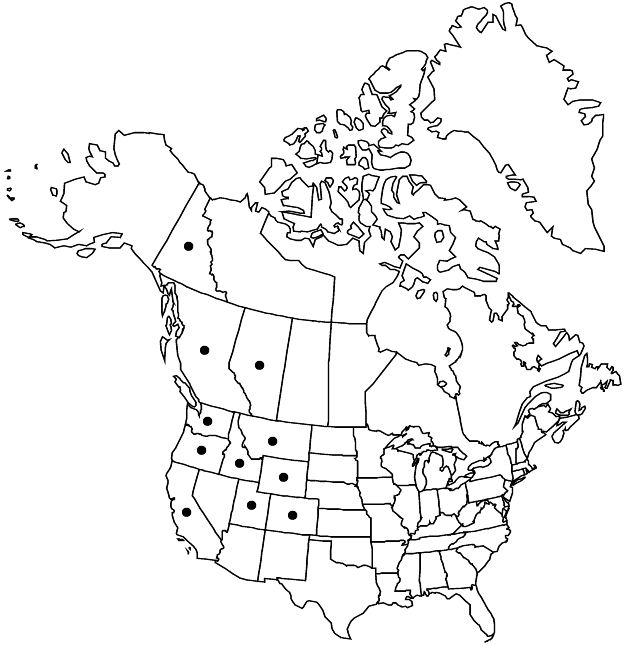Fragaria virginiana subsp. platypetala
Canad. J. Bot. 40: 881. 1962.
Stolons usually densely spreading-hairy. Leaves: petiole usually densely spreading-hairy; leaflet blade usually bluish green, slightly glaucous, sometimes dull, terminal leaflets ovate-obovate to cuneate or truncate, sometimes slightly leathery, margins serrate or crenate only in distal 1/3, teeth: relative number 0.1–0.4. Peduncles and pedicels densely spreading-hairy. Flowers 15–18.6 mm diam. (pistillate), 16.3–26 mm diam. (bisexual and staminate). Fruits: bractlets clasping or slightly spreading. 2n = 56.
Phenology: Flowering spring.
Habitat: Moist to dry sites, prairies, savannas, open forests, roadsides, abandoned fields
Elevation: 0–3700 m
Distribution

Alta., B.C., Yukon, Calif., Colo., Idaho, Mont., Oreg., Utah, Wash., Wyo.
Discussion
Plants of subsp. platypetala that are hypothesized to have resulted from a former introgression of subsp. glauca into Fragaria chiloensis on the Pacific coast have been grouped under subsp. platypetala. Plants growing away from coastal areas still show characteristics of F. chiloensis, such as having all stems densely spreading-hairy and relatively large hypanthia spreading or clasping the fruits.
Selected References
None.
Lower Taxa
"thin" is not a number. "thick" is not a number."thin" is not a number.